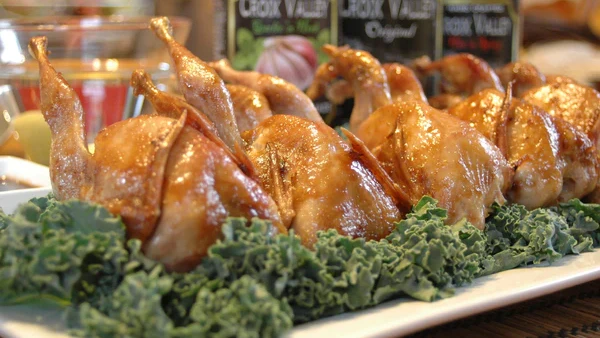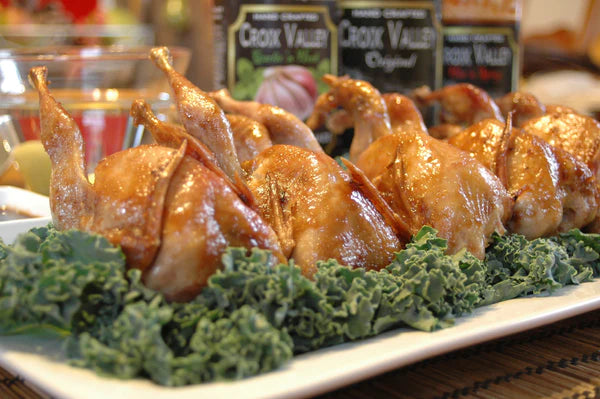Garlic and Herb Smoked Quail
Garlic and Herb Smoked Quail
Rated 5.0 stars by 1 users
Category
Poultry
Author
Damon Holter
Quail are such delicate little birds and are quite unfamiliar to most cooks outside of the environment of the hunting community, who revere these birds for great sport and amazing eating. Much like other poultry, Quail can be prepared in an array of fashions, from classic French preparations that are roasted to being stir-fried or used in curries. My method for Garlic and Herb Smoked Quail utilized the flavors of hardwood on the grill or smoker to pull this dish together but also invokes the power of a good sauce to finish it off. There is little need for dry rubs and excessive seasoning for this dish.
Smoked quail should only take about an hour in a grill at about 225⁰F. Add a few chunks of hardwood, such as apple or cherry, to the coals to start that smoking process effortlessly.

Ingredients
- 4-6 quail (depending on the number of hungry guests)
- Salt & Pepper
- 2 Tbsp Olive Oil
- Croix Valley Garlic ‘N Herb Sauce & Marinade
Directions
To cook the quail, simply brush a light coating of Olive Oil on the bird and season with salt and pepper. Place the quail in a covered grill or smoker over indirect heat, breast side up, and cook for approximately 1 hour or until the meat begins to firm and the juices run clear (shooting for an internal temperature of at least 145⁰F).
After 30 minutes into the smoking process, brush the quail with sauce and repeat every 10 minutes until done. The low heat of the grill will allow the sauce to caramelize on the meat, promoting a well-seasoned and exquisite meal.
Recipe Note
Due to the low and slow nature of this cook, there shouldn’t be any issue with the bird drying out, but many times when grilling quail over higher heat, the legs will tend to cook quicker than the rest of the bird. A flavorful method of preventing the legs from drying out is to use the technique called “larding”. Larding is simply adding fat to lean meats to prevent them from becoming tough and dry and to add moisture to the meat while cooking. Wrapping the legs in bacon not only accomplishes this technique very well but as the fat from the bacon renders, it bastes the meat as well, adding additional layers of flavor that is most enticing.



